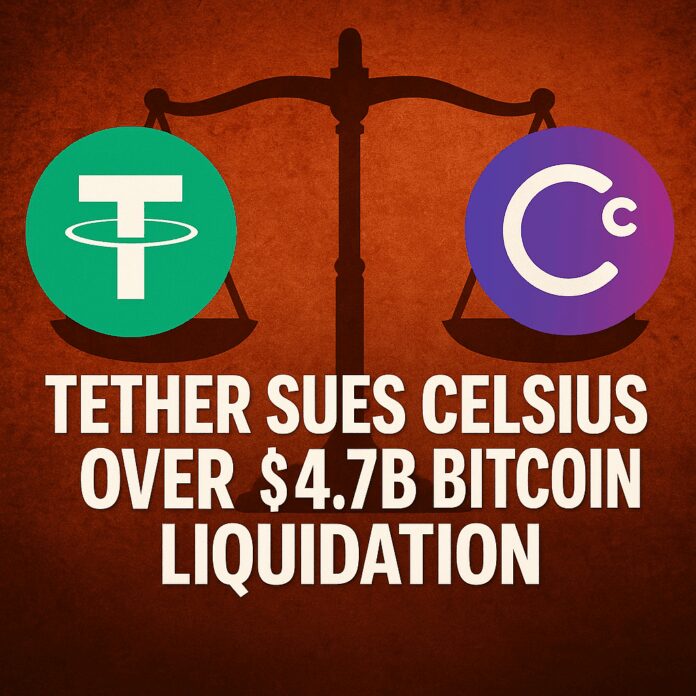The world’s biggest stablecoin issuer clashes with a collapsed lender. What’s really at stake?
The story so far
In a dramatic legal twist, Tether — issuer of the world’s largest stablecoin, USDT — has filed a lawsuit against bankrupt crypto lender Celsius Network, alleging it was unfairly forced to sell $4.7 billion worth of Bitcoin at distressed pricesin 2022.
As reported by Cointelegraph, the claim hinges on the assertion that Celsius, acting under pressure from its bankruptcy estate, liquidated collateral that was not actually underwater, damaging Tether’s financial interests.
The core allegations
- Tether says it had overcollateralized loan positions with Celsius—meaning there was no imminent threat of default.
- Yet during Celsius’s collapse, estate managers sold the BTC anyway, allegedly at below-market prices, violating contract terms.
- Tether now seeks to recover damages related to that forced sale, which it claims was unnecessary and poorly executed.
The case centers on what defines “default” or “liquidation triggers” in a crypto lending contract—especially when parties go bankrupt mid-deal.
Why it matters
| Issue | Why It’s Critical |
|---|---|
| Creditor hierarchy | The Celsius bankruptcy exposed a tangled mess of inter-party obligations and unclear collateral rules. |
| Loan documentation in DeFi/CeFi | This lawsuit underscores how vague or non-standard lending terms can explode under pressure. |
| Tether’s risk exposure | Despite claiming to never re-use customer funds, Tether is now shown to have had $4.7B in active loans with a high-risk lender. |
It also puts a spotlight on how Tether managed collateral, handled risk, and made decisions under fire—issues that continue to draw regulatory scrutiny.
Deeper questions raised
1. Why was Tether lending to Celsius at all?
This lawsuit implicitly confirms that Tether acted as a lender of last resort to Celsius. That raises serious questions:
- Was this disclosed to USDT holders?
- How did Tether assess Celsius’s risk profile?
- Did it breach its own risk management framework?
2. Was the Bitcoin really “safe” collateral?
Tether argues the positions were healthy, but liquidity conditions were collapsing at the time. The Celsius estate may argue it acted prudently to preserve overall creditor value.
3. Is this lawsuit reputational or financial?
Tether may recover part of the damages—but the broader win is narrative control. The firm continues to fend off criticism over opaque reserves, auditing gaps, and risk exposure. This lawsuit could help shift the spotlight onto Celsius’s conduct instead.
Broader implications for the crypto credit market
This lawsuit underscores why crypto lending without clear liquidation standards and legal enforceability is fundamentally unstable. The boom of 2020–2022 was built on informal relationships, handshake risk models, and often undocumented credit terms.
Now, in the post-Celsius era, that scaffolding is collapsing—and creditors are scrambling for priority in courts, not on-chain.
Bottom line
Tether’s lawsuit is more than a $4.7B dispute—it’s a proxy battle for trust in the crypto credit ecosystem. Both sides will try to claim the moral high ground. But the real lesson may be simpler:
If even Tether and Celsius couldn’t document a bulletproof lending agreement—what hope is there for the rest of the industry?
Until crypto credit markets adopt real-world legal standards and transparent risk controls, the wreckage of 2022 will continue to haunt both investors and innovators.




